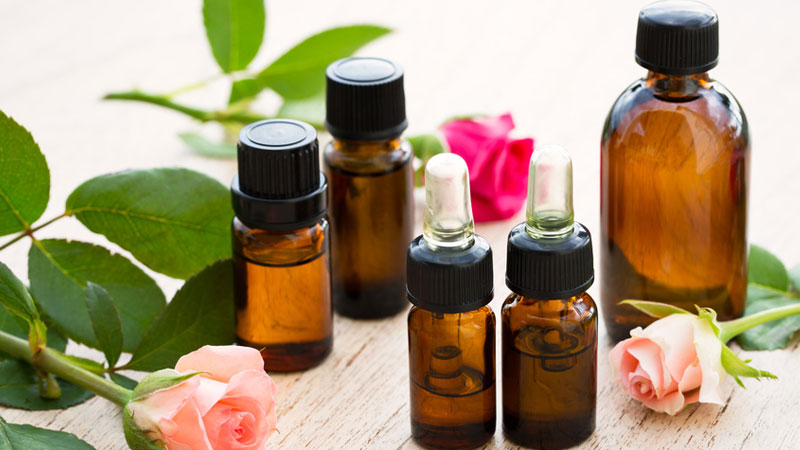Using aromatherapy in conjunction with other holistic therapies

I guess many therapists, like myself, who have been working with Aromatherapy for some time will have gained additional qualifications in therapies that we feel add huge value to our therapeutic expertise. Clients presenting with conditions outside of our current remit often inspires a desire for gaining additional tools and resources to extend our abilities to help more people.
It is vital for all of us to be aware that no single therapist can ever help everyone who comes into our clinic - and it's extremely important to know when to refer clients on. The most regular referrals I give would be to my close colleagues who practice Osteopathy and Traditional Chinese Acupuncture. However, over the last 25 years I have found certain therapies to be a wonderful addition to my own therapeutic repertoire, helping extend the efficacy of my aromatherapy treatments hugely, both in treatment potential and enjoyment. All these therapies are complete in their own right – but elements can also be combined within the actual aromatherapy treatment to great effect when indicated.
These are my favourite additions, the first two being used within the aromatherapy treatment, the other used in conjunction with or in addition to aromatherapy when required:
Reiki
This gentle and non-invasive use of subtle energy can “turbo charge” your treatment by helping to include an additional energy that the body will use as it is required. As Reiki treatment can take place with hands just above or lightly touching the body – it can be used in addition to the massage application itself to great effect. The key element – as always – is to explain the process to your client – so if your hands “go still” they will understand the reason. If it is appropriate and your client is comfortable – then the “chakra scanning” in the beginning – before the treatment progresses – will also give you a great deal of useful information. It can also help demonstrate the changes beginning to take place – if you are able to re-scan at the end of the session. If you feel changes it can be very encouraging for your client to receive this feedback.
Reflexology
Even a basic understanding of the key reflex points can be very useful when it comes to the foot massage part of your aromatherapy treatment. The spinal reflex is particularly clear and easy to access, and helps to demonstrate where the key areas of tension in the back are located. As we know, the areas of muscular tension are not necessarily where the pain or discomfort is felt. It may also be useful to be able to advise where your client could work on their own feet in between their sessions with you.
If you’re a qualified reflexologist and interested in combining aromatherapy into your reflexology treatments, there are several CPD courses available. These include Aromaflex, Aromareflex and Aromaflexology. These courses don’t offer ‘full’ aromatherapy training, but you will cover a small number of popular essential oils and how to incorporate them into your treatments.
Applied Kinesiology (AK)
As a separate part of my treatment – not as part of the aromatherapy itself – it can sometimes be useful to identify any food allergies or intolerances – using a basic form of AK called “Touch For Health”. I have found this particularly helpful for those suffering from digestive issues such as IBS, chronic fatigue issues and those who need to loose weight.
Neuro-Linguistic Programming
Being able to use language in a very conscious and directed way can be a huge help with any therapy. I have found NLP particularly useful; for clients suffering from anxiety, low self esteem or depression. The ways of “reframing “ the way of looking at the issues, and helping increase your clients ability to see themselves in a more empowered and positive position, is an invaluable mechanism to help encourage positive change.
Hypnotherapy
Again – separate to the aromatherapy session, but as a useful adjunct – hypnotherapy can be an outstanding tool. Being able to use your vocality with knowledge and understanding is also exceptionally useful even outside the actual treatment itself. For more significant issues, where phobia, addiction or significantly low confidence and negative “internal dialogue” are causing problems, I often use 2 hour treatments – the first section being aromatherapy massage. Following on from this – the client is in a semi-trance like state anyway – so perfectly ready to progress with a hypnotherapy session.
Thought Field Therapy
For fast and dramatic resolution of unhelpful emotional states, TFT has been an extraordinarily effective resource to add to my therapeutic “tool kit”. Initially the first training session was taken as part of my advanced hypnotherapy training. It soon became obvious that it was to supersede all my expectations. Creating new “neural networks” in the brains processing of information - with this system - creates a pathway clear of long term anxiety and issues that so many people put up with as part of their everyday life. If GP practices were to offer this system as part of the treatments on offer for anxiety, depression, phobias and sleeping problems, it is my belief that those “needing” medication would be dramatically reduced.
The reality is that in the future our GP surgeries need to be truly integrated medical centres, offering a variety of therapies under one roof. Those therapists that have developed a useful range of therapies to work with will be perfectly placed to work alongside their orthodox medical colleagues, for the benefit of everyone. These centres are emerging, let's hope they become common place very soon.
Joannah Metcalfe
Consultant Aromatherapist




